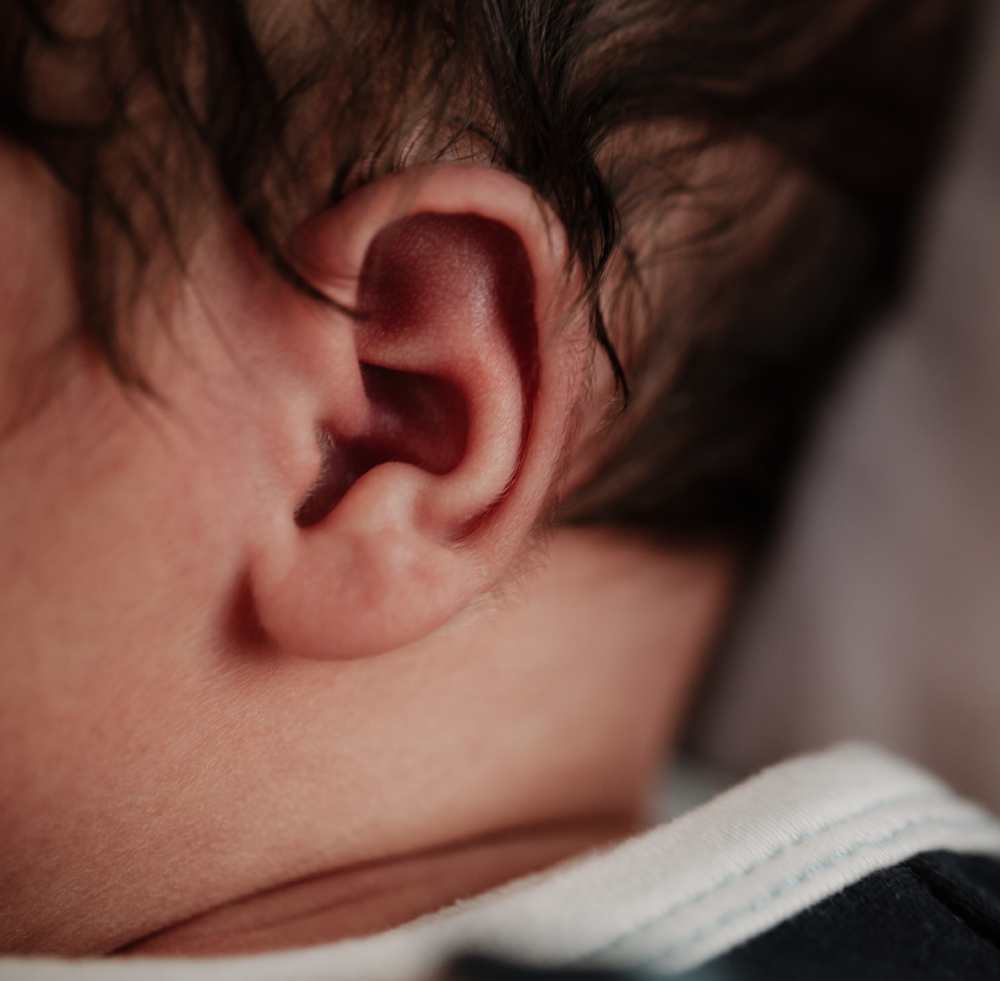A Baby’s skin color changes based on some essential factors such as genetics, age, temperature, and whether or not they cry.
Yes, According to a study, babies turn the color of their ears after birth and this may indicate their health. A baby’s ear changes color due to melanocytes, which produce melanin (a natural pigment).
In addition, melanin is responsible for producing skin pigment and hair color in babies. After birth, the melanocytes (pigment-producing cells) in a baby’s ears begin producing melanin.
The amount of melanin in a person’s skin will determine their skin color. Babies who have lighter skin will have less melanin than babies who have darker skin.
As a child gets older, melanin production gradually decreases by the time your baby reaches age 5, most of their ear color will have faded.
Parents often dream about how their baby will look. Every new baby is unique, and this includes the appearance of their skin. Some of these things are temporary, and they will change as the baby adapts to the external environment after being out of the womb.

Why Are My Newborn’s Ears So Dark?
Some parents report that their baby’s ears turned a different color shortly after they were born, while others say that their baby’s ears remained the same color throughout their lives.
Every newborn is unique, even the skin color and features of the body vary.
Here are the major reasons why your newborn’s ears have so dark;
1. Premature Birth
Newborn babies may have dark ears naturally. When babies are born, they are initially very pink, but they soon turn yellow, darker, or reddish.
In addition, infants are born with birthmarks, twin thumbs, dark ears, etc. It is natural to have birthmarks and dark ears, this is not a sign of disease.
You should prioritize your baby’s immunity and long life, so you do not have to worry about dark ears. Babies of mixed ethnic and multiracial backgrounds will have darker skin tones and more pigmentation.
If your baby’s skin color is different from that of other babies, then it might be natural. Most African-American babies are darker around the first few days after birth. Over time, their skin will lighten to its normal color.
2. Natural
Newborn babies may have dark ears naturally. When babies are born, they are initially very pink, but they soon turn yellow, darker, or reddish. In addition, infants are born with birthmarks, twin thumbs, dark ears, etc. It is natural to have birthmarks and dark ears and this is not a sign of disease. You should prioritize your baby’s immunity and long life, so you do not have to worry about dark ears.
If your baby’s skin color is different from that of other babies, then it might be natural. Most African-American babies are darker around the first few days after birth. Over time, their skin will lighten to its normal color.

3. Theory Of Black Ear
The theory of black ears says the color of a newborn baby’s top indicates the real color of the baby’s skin. In a new study, researchers found that newborns’ dark ears may be a result of a genetic variation called “the theory of black ear.” This variation causes increased melanin production in certain areas of the skin, including the ears.
Some believe that this concept is true while others believe it is a myth. It may be the case in some babies or vice versa. According to this theory, the baby will have a dark complexion if his or her ears are dark.
However, this theory of black ears is not always true. If a baby is born with dark ears, that does not necessarily mean it is a pure complexion. Even if a baby is born with dark ears, it does not mean that he/she is unhealthy. This is because babies inherit their mother’s and father’s complexion genes.
4. Transition With Time
Another reason could be that your baby has melanocytes, cells that produce melanin (the pigment that gives skin its color). If a baby lives in a tropical environment, its skin changes color.
When exposed to sunlight, the baby’s white complexion may turn into a dull appearance. Sunlight produces pigment in the body known as melanin. When a human is exposed to sunlight, he or she produces melanin, which turns their color brown or wheatish. This might be another reason why your newborn’s ears are so dark.

Does Ear Color Determine Skin Color?
Genetics plays a role in determining skin color, and it is determined by the amount and type of melanin pigment created in the body.
Dermatologists can determine someone’s skin color by looking at their earlobes. Because ear pigmentation is controlled by the same gene that determines skin color, your baby will have lighter skin if his or her ears are light.
However, there are many other factors that also contribute to someone’s skin color, including sun exposure and racial heritage.
Does Dark Ears Mean Dark Baby?
It’s not a direct correlation, but it can be an indication. Dark ears usually mean the baby has more melanin in its skin, which is just one of many indicators of ethnicity.
However, keep in mind that there is a great deal of variation in skin color even within ethnicities, so just because a baby has dark ears doesn’t mean they will definitely have darker skin. If you have any questions about your baby’s skin tone, it is best to consult your pediatrician.
Interesting facts about the baby’s skin changing color
The changing color of the baby somehow determines the problem with your little one. However, there is not always any serious issue with the child as every child is different and has unique features.
Newborns are very sensitive even after touching so you are making them feel love because of the stimulation of the love hormone oxytocin that makes you bond stronger with your baby. Here are some interesting facts about the baby’s skin color changes you should know;
- Intense crying can cause purple skin.
- According to whattoexpect.com pink tinge of the baby come from the blood vessels because of the thin skin.
- Darker skin is caused by losing weight.
- Baby’s Blue feet are normal for some days after he/she comes into the world.
- Yellowish eyes and skin are caused by jaundice.
- According to rch.org.au Mongolian spots are common on a baby’s back, buttocks and shoulders.
- It is common that twins or singles will get mixed complexion because of their parents.
- Lycopene is found in tomatoes that helps to make the baby’s complexion better because of its powerful antioxidants according to healthxchange.sg.
- Baby becoming darker with age is normal.
- The wrong bath temperature can make the skin darker.
Final Words
The pigmentation in a baby’s ears is usually one of the first places where they develop color. In addition, newborns’ ears are usually darker than the rest of their skin.
This is because the pigment cells (melanocytes) in the skin take some time to mature. So, don’t worry, your baby’s ears will become lighter over time.
By the time your baby is six months old, his or her ears will be basically the same color as the rest of his or her skin and it may take two years for the color to develop completely.
So if your baby’s ears are still dark at two years old, that’s likely to be their natural color.
Recommend
- Maximizing Baby Store Sales with Point of Sale Software
- Can Nuns Have Babies? 9 Fascinating Facts About Nuns
- Is Your Baby Grunting While Eating? 3 Reasons Why!
- Baby Poop Smells Sour? Should You Worry or Not?
- All You Need to Know About Dye Stealer Pregnancy Test Accuracy




